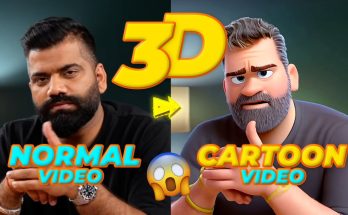In today’s fast-paced digital landscape, grabbing and holding your audience’s attention is more challenging than ever. With distractions just a click away, creators must be intentional with every word, image, or frame. One powerful way to keep people engaged? Transition hooks. Transitional Hooks for Content Creators.
In this guide, you’ll learn what transition hooks are, why they matter, and how to use them effectively to make your content flow seamlessly—and keep your audience coming back for more. Transitional Hooks for Content Creators.
What Are Transition Hooks?
Transition hooks are words, phrases, visuals, or emotional cues that guide your audience smoothly from one part of your content to the next. Think of them as bridges connecting key points—whether in blogs, videos, podcasts, or social media.
Why They Matter
- Boost Engagement: Well-placed hooks generate curiosity, encouraging viewers or readers to stick around.
- Improve Flow: Transition hooks create logical progression, making content easier to follow.
- Enhance Retention: They help reinforce key takeaways by linking ideas clearly.
- Elevate Professionalism: Smooth, coherent transitions make your work look polished and credible.
Types of Transition Hooks
Verbal Hooks
Simple phrases that shift the topic smoothly:
- “Now that we’ve covered…”
- “But here’s where it gets interesting…”
- “On the flip side…”
Visual Hooks
In videos or graphics, transitions like:
- Animated text or infographics
- Scene fades and swipes
- Captions summarizing key points
Emotional Hooks
Designed to stir curiosity or empathy:
- Personal stories
- Thought-provoking questions
- Quotes that tie into the next topic
Storytelling Hooks
Use narrative to pull your audience along:
- Cliffhangers
- Flashbacks
- Analogies or parables
How to Use Transition Hooks Effectively
Know Your Audience: Tailor the tone and style of your transitions to match your viewers’ expectations.
Keep It Consistent: Maintain a cohesive voice across your content to avoid jarring shifts.
Vary Your Hooks: Use a mix of types (verbal, visual, emotional, storytelling) to keep things fresh.
Time It Right: Use hooks at critical moments—right before major points or changes in direction.
Be Relatable: Tie your transitions to real-life experiences or challenges your audience may face.
Ask Questions: Questions are powerful—“Have you ever wondered why…?” keeps curiosity alive.
Practical Examples
- Blog Post: “Last time, we explored mindfulness. Today, let’s shift to healthy eating.”
- Video: “You’re warmed up—now let’s dive into the full workout.”
- Podcast: “That wraps up social basics—let’s look at what’s trending now.”
- Social Media: “We shared 5 productivity tips. Which one do you swear by?”
Tips for Crafting Strong Transition Hooks
- Use clear, simple language—avoid jargon.
- Add visual cues in videos to support the transition.
- Summarize before moving on to reinforce retention.
- Build a narrative arc for longer content pieces.
- Ask for audience feedback—learn what works best.
How to Create or Download Transition Hooks
Use Editing Software: Programs like Adobe Premiere Pro, Final Cut, or DaVinci Resolve let you create custom transitions with text, animations, or cuts.
Get Stock Transitions: Sites like Envato Elements, Motion Array, and Videohive offer pre-made transitions (free and paid).
Try Online Tools: Platforms like Canva or InVideo offer easy-to-use templates and effects—no editing experience required.
Check YouTube: Search for “free video transitions” to find downloadable packs and tutorials.
Use After Effects: Advanced users can access templates and customize effects for professional-grade transitions.
Steps to Create Your Own Hook:
- Open your editing software
- Add your clip or image
- Insert and animate text or overlay
- Choose a transition effect
- Export your final video
Learn From the Pros
- Marie Forleo keeps viewers hooked by summarizing and teasing what’s next.
- Neil Patel uses sharp questions and visual cues to guide readers.
- TED Talks master storytelling with emotional transitions and anecdotes.
Final Thoughts
In a content-saturated world, how you move from one point to another matters just as much as what you say. Mastering transition hooks can elevate your content from good to unforgettable.
So experiment with different styles, refine your approach, and watch how strong transitions help you retain attention, boost engagement, and tell a more compelling story.



